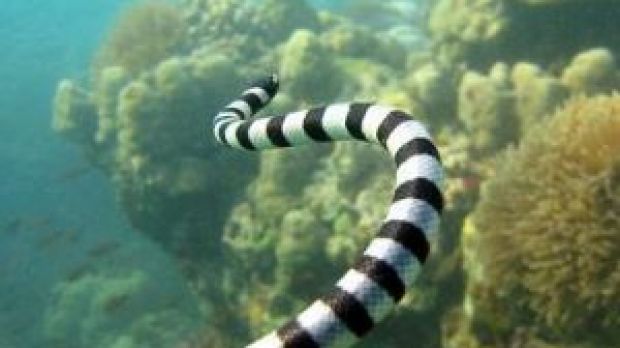Drinking seawater is extremely tricky: instead of easing thirst, you worsen it!
But marine creatures are supposed to be resistant to it.
Well, it seems that at least some sea snakes must get freshwater to survive.
Their need for access to fresh water may explain their patchy distribution along certain coastlines.
Many sea animals have special adaptations for getting rid of the excess salt taken in from the surrounding environment.
Sea snakes, from which most species live in the open ocean, while a few others hang out inshore, have a gland under their tongues for this purpose.
For a long time, biologists assumed that the gland ensured sea snakes of water from salted sea.
Harvey Lillywhite, an ecological physiologist at the University of Florida in Gainesville, began to suspect that was not so, having trouble with file snakes (a type of sea snakes) kept continuously in oceanic water.
Once put in fresh water, the snakes got back.
So, Lillywhite and his team made further experiments with three species of sea kraits, snakes that live in the coastal waters of islands off Taiwan but, at the very least, come ashore to lay their eggs, usually in rocky caves close to the intertidal zone.
Two of the species also visit land occasionally.
Sea kraits (photo above)(which are related to cobras and are venomous) are considered even more adapted to sea life than file snakes (photo bellow)(non venomous and related to common grass snake and corn snake) and all have the brine-secreting gland.
For their experiments, the researchers kept the snakes out of water long enough to allow them to dehydrate and then they located them in different concentrations of seawater.
None drank anything that was 50% or more salt water (They live in full-strength seawater.)
"But they did gulp down water fresh water and imbibed 25% saltwater concentrations," Lillywhite reported.
In a second experiment, the researchers monitored the weight of the snakes for 10 days.
They kept the snakes in the seawater without food and half of the snakes were put in fresh water every other day for an hour.
"All the snakes experienced dehydration and lost weight, but the ones exposed to fresh water lost significantly less," says Lillywhite.
"The results help explain the demographics of these Taiwanese snakes," Lillywhite says.
"They tend to be most plentiful along the shore, where there are springs or other sources of fresh water nearby.
Furthermore, there are more sea snake species in areas with higher mean annual rainfalls," notes Lillywhite.
On calm sea, thin layers of rain will float on top of the salt water, providing supplies of freshwater for the sea snakes.
It's a "major finding," says Harold Heatwole, an ecologist at North Carolina State University in Raleigh.
"He shows pretty clearly that [sea snakes] have to have access to fresh water," says physiologist Lisa Hazard from Montclair State University in Upper Montclair, New Jersey.

 14 DAY TRIAL //
14 DAY TRIAL // 
